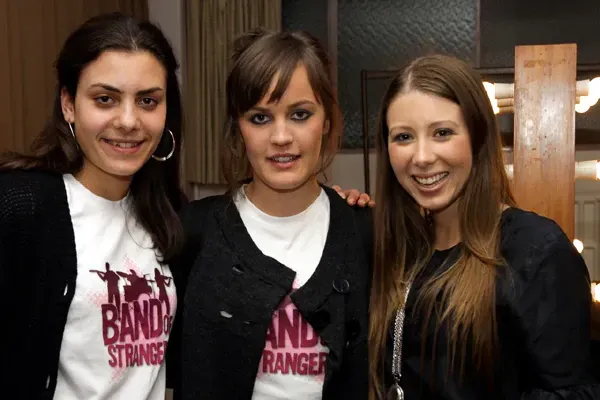Youth Radio Network - Part II
Written by

Maria English was at Samuel Marsden Collegiate when her NZ debating team won the world championships. Did you hear their oratory? Do you know which nation they took first place over?
Maria English was at Samuel Marsden Collegiate when her NZ debating team won the world championships. Did you hear their oratory? Do you know which nation they took first place over?
In our last blog we broadly outlined our views on a Youth Radio Network: the possibilities, the positives: a general opinion on the potential for a platform that engages, educates and empowers creative youth in New Zealand.
What might that be? Well if this broadcasting environment had been running for a while, it would have told us about:
Maria English and her NZ secondary school debating team winning the world championships in Greece, defeating England. The entire event could be streamed live, and posted for later listening. Video’d too?
Liam Finn, Lawrence Arabia and/or Conan Moccasin might be recording an album. We hear them talk about the project and listen to emerging tracks from the studio. Audience can submit questions to them online during a live video stream.
The Rockquest national finals are about to be held. We hear about and from each act, their music and their ambitious worlds. The audience can submit questions, and the bands can build their profiles.
The Government have recently changed the criteria for Student Allowances at University. Students at AUT’s communications faculty investigate the vagaries of the press and electronic media reporting on this, and report on actual impacts on students. The Student Unions could debate the merits of the changes with Youth representatives of the political parties in power.
Auckland’s Metro magazine come out with their ‘rating’ of Auckland schools. A panel of student leaders from decile 1, 3, 6 and 9 Auckland schools analyze the results. Responses by online listeners to that Metro article are collated beforehand and utilized by the panel.
Play It Strange announces the Top 40 songs in its annual secondary schools’ songwriting competition. The songs are streamed each day for a fortnight and available for downloading. Listener responses are posted online.
While these specifics are balls tossed in the air, we see the general kaleidoscope of possible programming to be wide and current. But in line with that philosophy we see a few initial adjustments and parameters as critical to the success of the Network.
Firstly, lets take the word ‘Radio’ out of the equation. A Youth Network could have a much broader range of possibilities than a real-time radio frequency broadcasting out. There would be a greater platform for a range of media, and possibilities for interaction and participation.
It could function within the Radio New Zealand infrastructure and be a part of their online services in terms of technology and reporting (financial, etc). Radio New Zealand could provide a solid stage on which to project the Network.
A Youth Network would need its own volunteer advisory board. A board of 5, say, with a Chairperson and another appointed by the RNZ Board, another two appointed by the Minister of Broadcasting, and the final 5th board member appointed by the previous four. The emphasis would be on securing 2-3 board members under the age of 30. The Board would report to the Radio NZ CEO, and oversee the general direction and running of the Network.
We could see there being initially a staff of 3. A General Manager, to oversee the day-to-day running of the Network. A Content Director, to facilitate and manage the specific content, and an IT Manager, to manage the running and upkeep of the website.
The exciting part of all this is, of course, the content. Given the technological landscape we live in, the possibilities for a Network such as this are unlike anything that has gone before. We can take old models and rejuvenate and invigorate them; provide the means for young creative New Zealanders to foster and grow in a community of exciting and like-minded people.
The content would be programme orientated.
- Live interactive Interviews
- In-depth one-on-one Interviews
- Live competitions
- New songs
- Original drama
- Columns
- Essays/Opinion pieces
- Short films
- Live Debates
- Poetry
- Short Stories
The content could feature in a similar way to radio in terms of programming. With any live interactive programming a regular and well-documented time frame would be essential. With other programming however, regularity would be ideal. Every Friday evening a new short story could be uploaded. Periodic chapters to an ongoing fiction story are uploaded every second Wednesday. Audio of a poetry reading is a Sunday afternoon feature. Sunday evenings new music is streamed live in a magazine programme. And on it goes.
How is it funded?
NZ On Air provide around $30 million a year to Radio New Zealand. It would probably be able to make that 31. Approved sponsors could have ‘naming’ rights to certain programmes in line with the American public service broadcasting model. And the emerging philanthropic strategies of corporates along with crowd funding sites all offer places to go.
We’re talking about content that is currently not heard/seen. A Youth Network wouldn’t be about taking over programming that is currently broadcast by current Radio NZ stations, b-Net stations or commercial radio. It is about opening up a new world of information, imagination and shared involvement in the hearts and minds of young NZers.